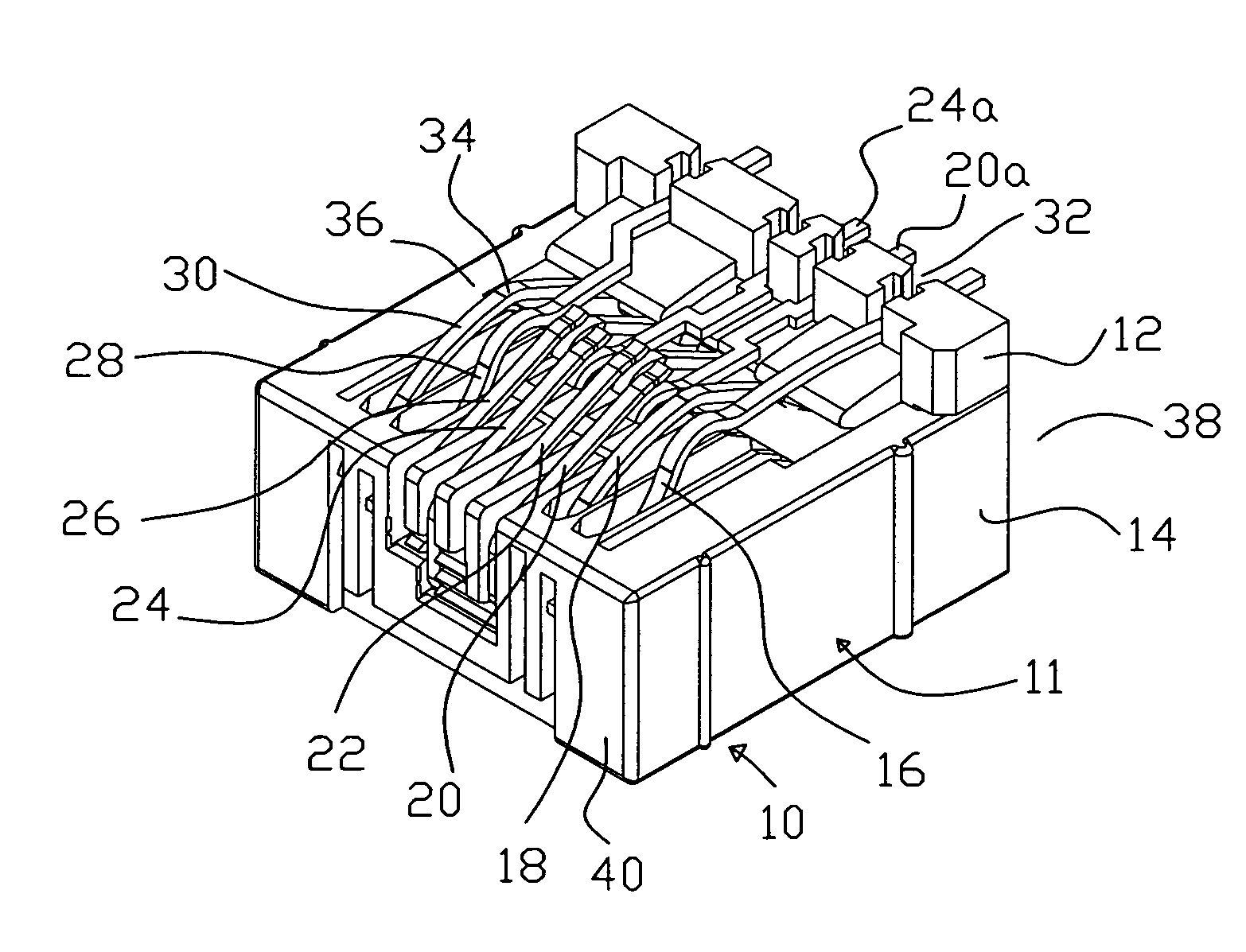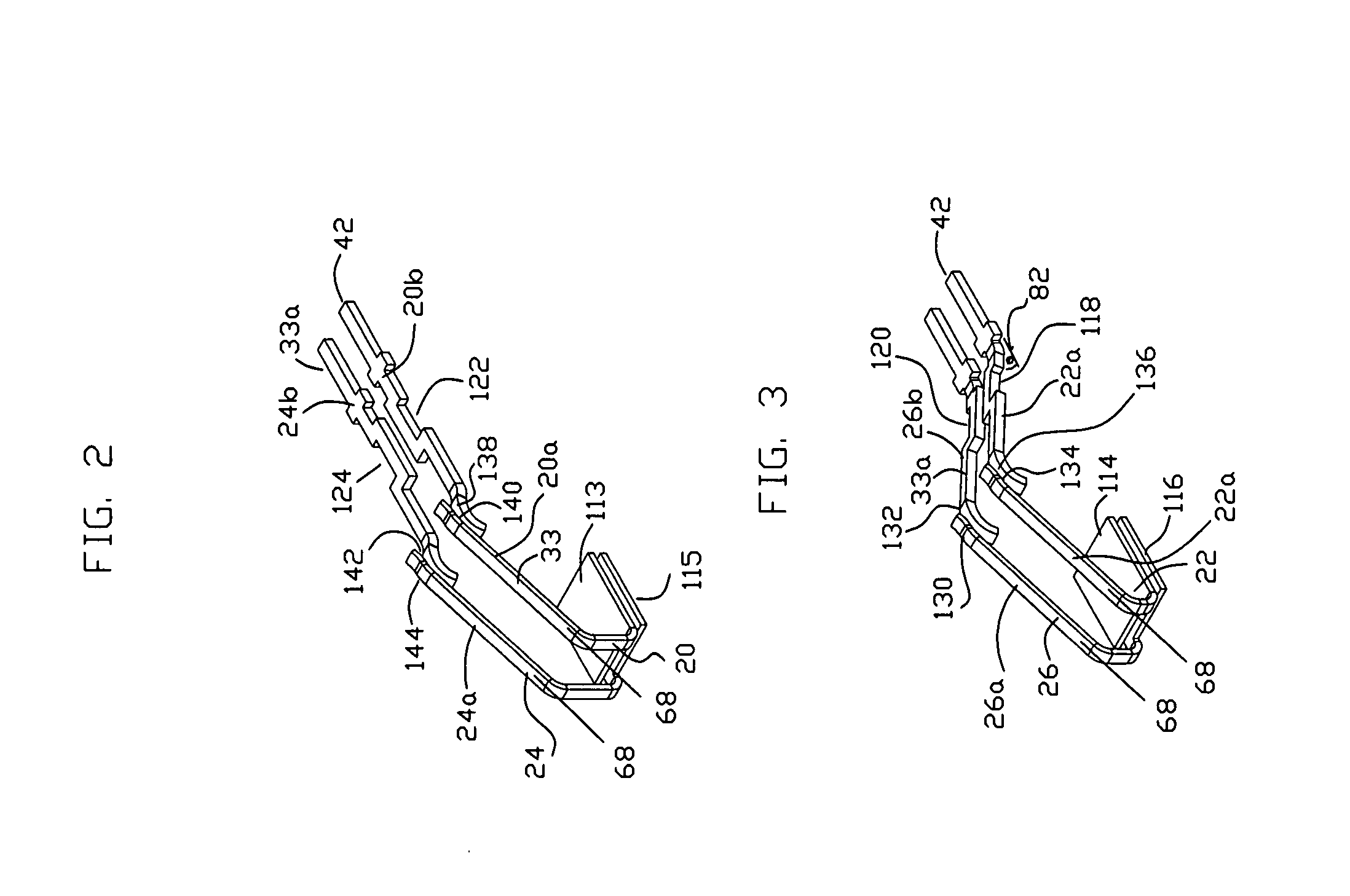Modular insert and jack including bi-sectional lead frames
a module insert and bi-sectional technology, applied in the direction of two-part coupling devices, electrical equipment, coupling device connections, etc., can solve the problems of interference in the cable, noise being a primary limitation factor in the performance of a communication system, etc., to achieve simple and low cost, reduce noise, and not alter the impedance characteristics of the wire pair
- Summary
- Abstract
- Description
- Claims
- Application Information
AI Technical Summary
Benefits of technology
Problems solved by technology
Method used
Image
Examples
Embodiment Construction
)
[0061]The present disclosure provides advantageous modular insert assemblies for use in voice / data communication systems. The present disclosure also provides jack assemblies that include such insert assemblies, and jack / plug combinations that benefit from the advantageous structures, features and functions disclosed herein. In addition, the present disclosure provides methods for effecting voice / data communications wherein modular insert assemblies, jacks containing the disclosed insert assemblies and / or jack / plug combinations as described herein, are advantageously employed.
[0062]The disclosed modular insert assemblies include one or more bi-sectional contacts that define two distinct states: (i) an “open” state where the front end portion of a bi-sectional contact is spaced from and not in electrical communication with a rear end portion of such bi-sectional contact, and (ii) a “closed” state where the front end portion of the bi-sectional contact is in contact with, and therefo...
PUM
 Login to View More
Login to View More Abstract
Description
Claims
Application Information
 Login to View More
Login to View More - R&D
- Intellectual Property
- Life Sciences
- Materials
- Tech Scout
- Unparalleled Data Quality
- Higher Quality Content
- 60% Fewer Hallucinations
Browse by: Latest US Patents, China's latest patents, Technical Efficacy Thesaurus, Application Domain, Technology Topic, Popular Technical Reports.
© 2025 PatSnap. All rights reserved.Legal|Privacy policy|Modern Slavery Act Transparency Statement|Sitemap|About US| Contact US: help@patsnap.com



